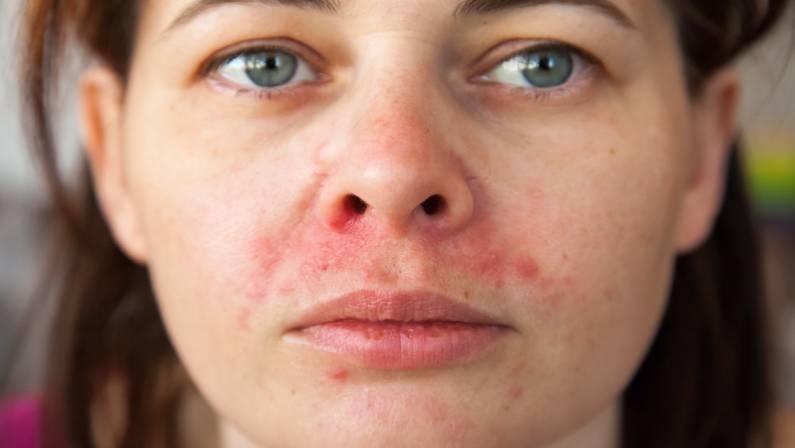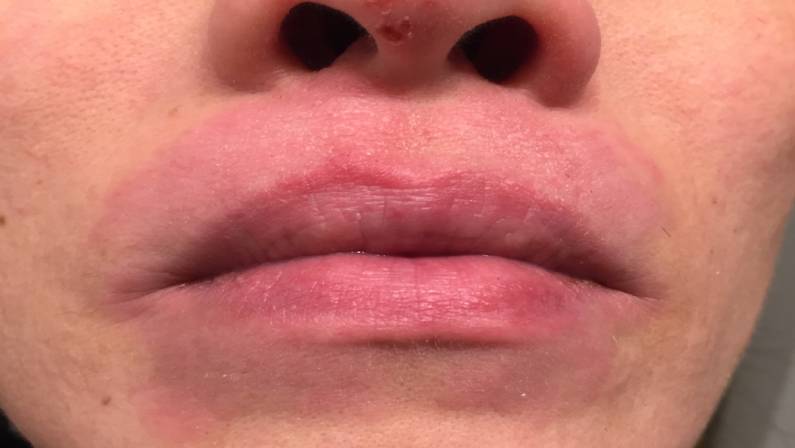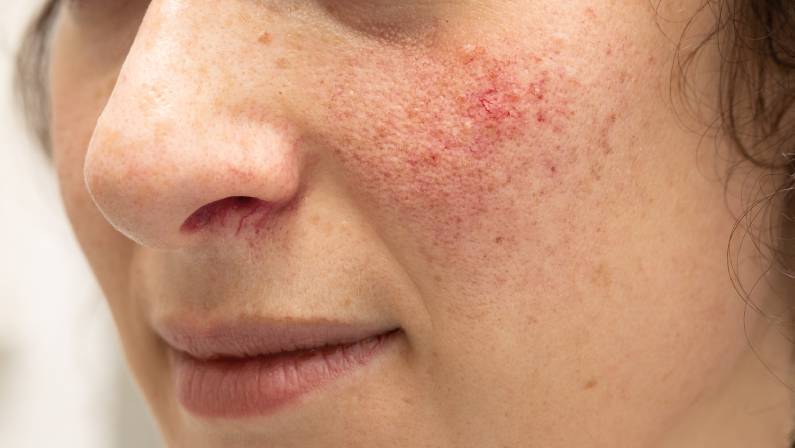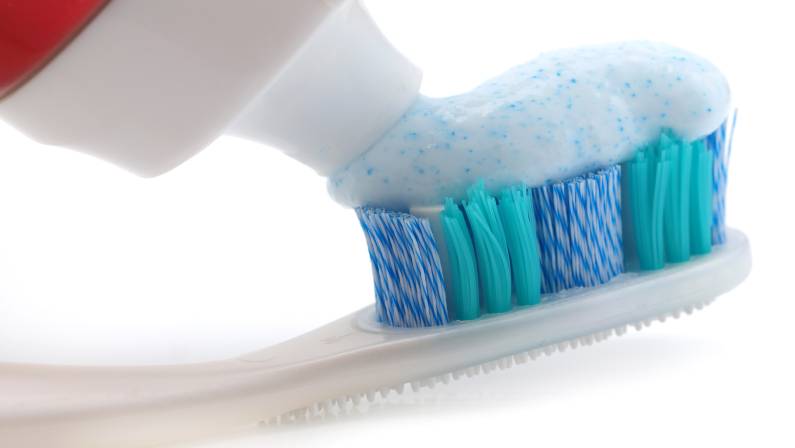People who suffer from perioral dermatitis know how frustrating and embarrassing it can be. This skin condition causes red, irritated patches around the mouth and can be difficult to treat. In this blog post, the best ways to get rid of perioral dermatitis for good will be discussed.
Table of Contents
What is perioral dermatitis?
Perioral or periorificial dermatitis is a skin condition characterized by red, irritated patches around the mouth. The cause of this condition is unknown, but it is thought to be related to an overgrowth of bacteria on the skin. This condition is more common in women than men and usually affects people between the ages of 30 and 50. It is best to check with a board-certified dermatologist when at risk of developing perioral dermatitis.
Is perioral dermatitis contagious?
No, perioral dermatitis is not contagious. Someone with this condition cannot spread it to other people by touching them or sharing makeup or other personal items.
What are the types of perioral dermatitis?
Aside from the typical perioral dermatitis, there is another type called granulomatous perioral dermatitis. Granulomatous is an irregular form of perioral dermatitis, not a usual kind. Instead of red pimples, granulomatous dermatitis manifests as yellowish ones. Granulomatous dermatitis is more common in children than in adults.
Where does perioral dermatitis most commonly occur?
This skin condition is usually easily recognizable. It most commonly appears around the mouth but can also appear on the cheeks, nose, and forehead. It is rare for this condition to occur in other parts of the body.
What causes perioral dermatitis?
Perioral dermatitis has no exact or recognized cause. Although, experts suggest possible causes including:
Steroids
These are one of the most common causes of perioral dermatitis, such as:
- Topical steroid creams
- Inhaled prescription steroid sprays (nasal sprays)
Lifestyle choices
A person’s habits and the products they use greatly affect their health and body.
Some examples are:
- Certain ingredients in cosmetics and personal hygiene products
- Choice of moisturizers and heavy face creams
- Choice of fluoridated toothpaste
- Dental fillings
- Gum chewing
Other
Other than the aforementioned, there are also other probable causes, including:
- Hormonal changes or oral contraceptives
- Dysfunction of the epidermal barrier
- Immune system problems
- Demodex mites
- Altered cutaneous microflora
- Bacteria (follicular fusiform)
- Candida albicans
What are the symptoms of perioral dermatitis?
Perioral dermatitis has numerous symptoms that are usually found around the mouth but can also move to the eyelids, or around the eyes and nose. Rarely, it can also appear on your genitals, scalp, ears, neck, etc.
These include:
- Presence of red, irritated patches around the mouth
- Rash with spots
- Inflamed bumps that are called papules
- Vesicles (clear fluid-filled bumps) or pustules (white fluid-filled bumps)
- Itching or burning sensation
- Pink eye (for some people)
How is perioral dermatitis diagnosed?
People with any of the symptoms associated with perioral dermatitis should see a board-certified and trusted dermatologist for an accurate diagnosis. You can contact Team Dermatology to book an appointment. They will likely perform a physical examination and ask about the patient’s medical history and symptoms.
In order to rule out any potential infections, the dermatologist may also do a skin culture test. They will swab a small patch of skin from the afflicted area during this test. They may also take a skin sample (biopsy) to rule out other conditions.
Who is at risk of getting perioral dermatitis?
Perioral dermatitis can be more likely to develop in some people.
These risk factors consist of:
- Someone with a history of allergies
- Women are more prone than men to develop this illness after pregnancy
- Someone with a hormonal imbalance
- Young and middle-aged persons
- People who apply steroids or ointments to the face
How to Get Rid of Perioral Dermatitis Using Home Remedies
It is always best to check with a doctor when treating perioral dermatitis.
Although, for quick home remedies, someone who has the condition can try to:
- Avoid topical steroids
- Change cosmetics and hygiene products
- Switch up your skincare routine
- Use essential oils
Treatment Options For Perioral Dermatitis
Perioral dermatitis is a common and frustrating skin condition that can be difficult to treat. The good news is that there are a number of effective treatments available.
These include:
Oral Antibiotics
There are a number of oral medications that can be effective in treating perioral dermatitis. Antibiotics may be prescribed for perioral dermatitis in order to clear the infection. It is important to finish the entire course of antibiotics, even if the symptoms have resolved. Stopping the course early can lead to the infection recurring.
Topical Medications
One of the most common and effective treatments for perioral dermatitis is topical steroids. Topical steroids are available over-the-counter or by prescription. They can be applied directly to the affected areas of the skin.
Topical steroids are most effective when used in conjunction with other treatments, such as avoiding triggers, changing cosmetics and hygiene products, and using a non-irritating skincare routine.
Face Washes And Moisturizers
There are a number of skincare products that can be helpful in treating perioral dermatitis. Face washes and moisturizers that are non-irritating and non-comedogenic are best.
How long will it take to get rid of perioral dermatitis?
The length of time it will take to treat perioral dermatitis depends on the severity of the condition and the treatment being used. In general, most cases of perioral dermatitis can be resolved within a few weeks to a few months. However, some cases may take longer to resolve.
With the right treatment plan, most cases of perioral dermatitis can be resolved within a few weeks to a few months. So it really is important to consult with your doctor or dermatologist. You can book a consultation with Team Dermatology for the best treatment plan.
How to Prevent Perioral Dermatitis
There is no certain method for preventing developing perioral dermatitis because the risk factors vary, and the cause still needs to be fully known. However, there are a number of measures that can be taken to prevent perioral dermatitis from developing or recurring.
These include:
Avoiding lifestyle triggers
A person’s lifestyle choices greatly affect their skin and body. Using a non-irritating skincare routine, changing cosmetics and hygiene products, and practicing good oral hygiene are some ways a person can prevent perioral dermatitis.
Avoiding medication triggers
One must avoid using topical steroid creams on the affected areas as much as they can, unless their dermatologist specifically instructs them to. Ask the doctor to recommend a topical steroid that is quite moderate if one has been prescribed. Perioral Dermatitis can be brought on or made worse by the potent ones.
If one is using oral contraceptives to avoid getting pregnant or for other medical reasons, it is important to check for zinc deficiency. After eating, take a zinc supplement, especially if taking birth control.
Treating and managing rosacea
People with rosacea often develop perioral dermatitis. Therefore, it is important to manage and treat any underlying skin condition.
If you have perioral dermatitis, be sure to see a board-certified dermatologist for an accurate diagnosis and treatment plan that’s right for you.
What types of food trigger perioral dermatitis?
There is no certain food that has caused perioral dermatitis to trigger. However, some people may find that their symptoms are worse after eating certain foods. If one thinks their symptoms may be triggered by food, keep a food diary. This can help them and their doctor identify any potential triggers.
Some possible triggers include:
- Spicy food
- Food with gluten
- Salty food
Is perioral dermatitis a fungal infection?
The most likely reason for perioral dermatitis is an overuse of topical steroids. There are numerous possibilities, but the exact reason is still unknown. According to one notion, Candida Albicans (a type of fungus) is what causes perioral dermatitis.
Is perioral dermatitis a bacterial infection?
There are numerous theories on the specific cause of perioral dermatitis. According to another theory, the type of bacteria called follicular fusiform is responsible for this skin condition.
Does the sun make perioral dermatitis worse?
The sun is a recognized trigger, indeed. A flare-up may be brought on by UV radiation, excessive heat, and the environment. In fact, certain medications used to treat perioral dermatitis have the potential to increase your skin’s sensitivity to the sun.
What irritates perioral dermatitis?
A flare-up of perioral dermatitis can result from a variety of factors. Oral contraceptives, fluoride in toothpaste, steroidal creams or ointments applied to the face, cleansers, and cosmetics put directly on the rash, and stress can all aggravate it.
Is perioral dermatitis permanent?
If you don’t seek treatment for perioral dermatitis, it could become permanent. The majority of cases do end up being resolved, but it may take weeks or years. If you do receive treatment, your signs and rash will probably disappear considerably faster. However, perioral dermatitis has no known reversible treatment so it may recur.
It is Always Best to Consult with a Dermatologist
Perioral dermatitis is a skin condition that can be quite irritating. However, there are many things that you can do to prevent it from developing or recurring. If you have perioral dermatitis, be sure to see a board-certified dermatologist for an accurate diagnosis and treatment plan that’s right for you.
This content is for informational purposes only and does not constitute medical advice. The information contained herein is intended to help you better understand perioral dermatitis and does not replace the need for a consultation with a medical professional. Team Dermatology has a team of trusted dermatologists and skin care experts. Only a certified physician can determine if you have perioral dermatitis and what necessary treatments are best for you based on a thorough evaluation.






